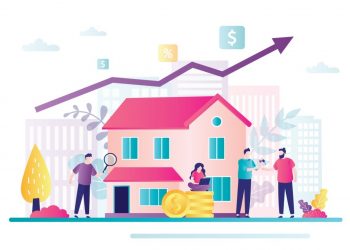Mortgage rates edged down this week, but only slightly and remaining above the 5% mark, according to the results of this week’s Primary Mortgage Market Survey® (PMMS®) from Freddie Mac, released Thursday.
The survey shows the 30-year fixed-rate mortgage (FRM) averaged 5.10% this week.
Key findings:
- 30-year fixed-rate mortgage averaged 5.10% with an average 0.8 point as of April 28, 2022, down slightly from last week when it averaged 5.11%. A year ago at this time, the 30-year FRM averaged 2.98%.
- 15-year fixed-rate mortgage averaged 4.40% with an average 0.9 point, up from last week when it averaged 4.38%. A year ago at this time, the 15-year FRM averaged 2.31%.
- 5-year Treasury-indexed hybrid adjustable-rate mortgage (ARM) averaged 3.78% with an average 0.3 point, up from last week when it averaged 3.75%. A year ago at this time, the 5-year ARM averaged 2.64%.
What experts are saying:
“The combination of swift home price growth and the fastest mortgage rate increase in over forty years is finally affecting purchase demand,” said Sam Khater, Freddie Mac’s chief economist. “Homebuyers navigating the current environment are coping in a variety of ways, including switching to adjustable-rate mortgages, moving away from expensive coastal cities, and looking to more affordable suburbs. We expect the decline in demand to soften home price growth to a more sustainable pace later this year.”
Mortgage rates were roughly flat this week, which is a week before the Federal Reserve may raise interest rates further, said Nadia Evangelou, senior economist and director of forecasting for the National Association of REALTORS®. “Rising Covid cases in China are adding concerns to the market about the impact of a potential lockdown on supply chains and the global economy. According to Freddie Mac, the 30-year fixed mortgage rate fell slightly to 5.10% from 5.11%. Thus, current buyers need to spend about $25,000 more to buy the typical home compared to a purchaser who bought their home a year ago.”
Evangelou continued: “Even though mortgage rates are higher now than the previous year, on a historical level, rates still aren’t as high as they used to be. For example, in 2002, the average rate on a 30-year fixed mortgage was about 7%. In addition, the rate on a 5-year adjustable-rate mortgage (ARM) is lower by 1.3 percentage points than a 30-year fixed mortgage rate. However, the historical average spread between these two rates is about 0.8 percentage points, making the 5-year ARM currently more attractive to borrowers. Although the most popular form of home financing is the 30-year fixed-rate mortgage, adjustable-rate mortgages (ARMs) are also common. Thus, we may see a change in U.S. household mortgage trends. According to the Federal Reserve of New York, the ARM share has fluctuated substantially over time, reaching highs of 60 to 70 percent in 1994 but falling significantly in recent years. Nevertheless, buyers should be aware that the rate and consequently the monthly mortgage payment will change after the first 5 years, depending on economic conditions.”
“The Freddie Mac fixed rate for a 30-year loan broke a seven-week strong upward streak, with a slight slide to 5.10% this week, in the wake of a moderate retreat in the 10-year Treasury,” said George Ratiu, realtor.com®’s manager of economic research. “After cresting 2.9% last week, the Treasury yield backed off as investors worried about China’s worsening Covid outbreak and large-scale lockdowns. Markets are increasingly weighing that with Beijing potentially following in Shanghai’s mass quarantine footsteps, the outlook for economic growth is darkening, which may affect the U.S. economy. Additionally, commodity prices are feeling another shock from supply chain disruptions due to the war in Ukraine. This has led the World Bank to project elevated food prices for several years to come and the prospect of stagflation for the world economy, a reality not seen since the 1970s. Inflation is likely to run at a fast pace for longer than expected, keeping pressure on mortgage rates for the medium term.
“Real estate markets are shifting under the weight of record-high prices and rising mortgage rates,” Ratiu continued. “This is leaving many homebuyers unable to get a foot in the homeownership door due to being priced out of the market. Buyers of a median-price home are looking at a monthly mortgage payment that is almost 50% higher than it was a year ago, adding an extra $560 to their monthly expenses. It is not surprising that many are stepping back from the market, hoping that conditions will improve. Contract signings have declined for five months in a row, pointing to expectations of continued declines in home sales ahead. Markets reached peak prices early this spring, with the next few months expected to see a moderation in the pace of appreciation followed by a flattening in the fall. The good news is that for buyers frustrated by the past year’s frenzied market, the shift toward a more normal landscape holds the promise of more homes to choose from, a slower pace of sales, and better prices.”












